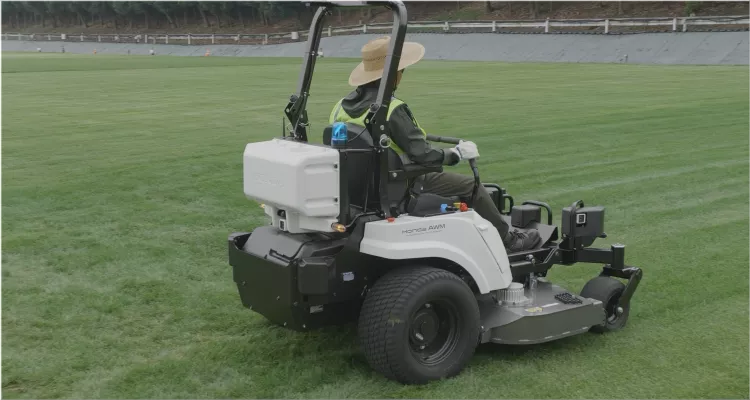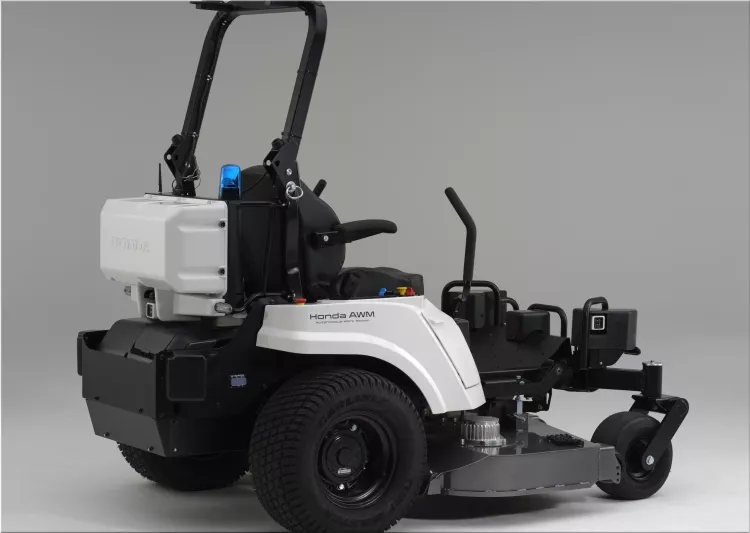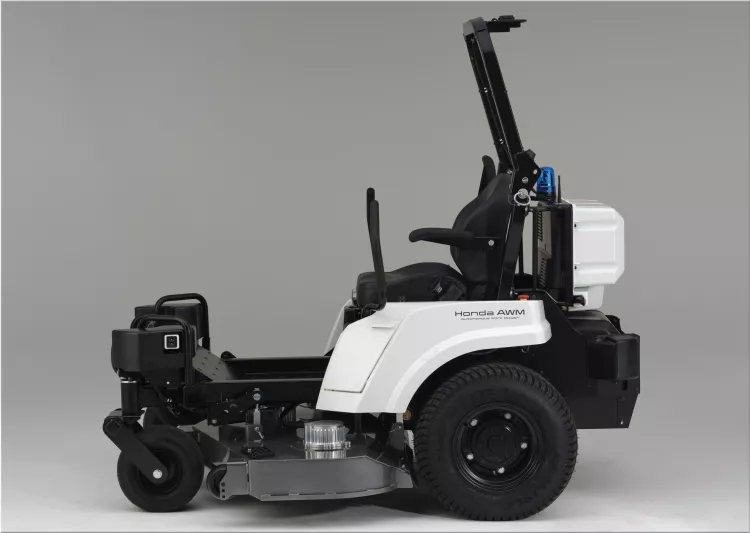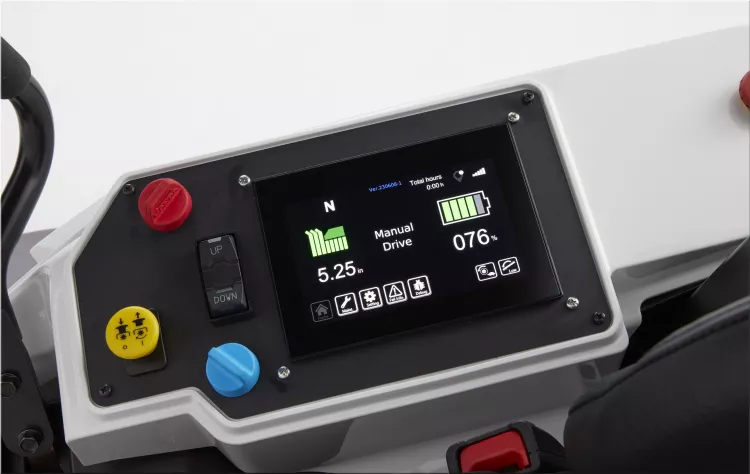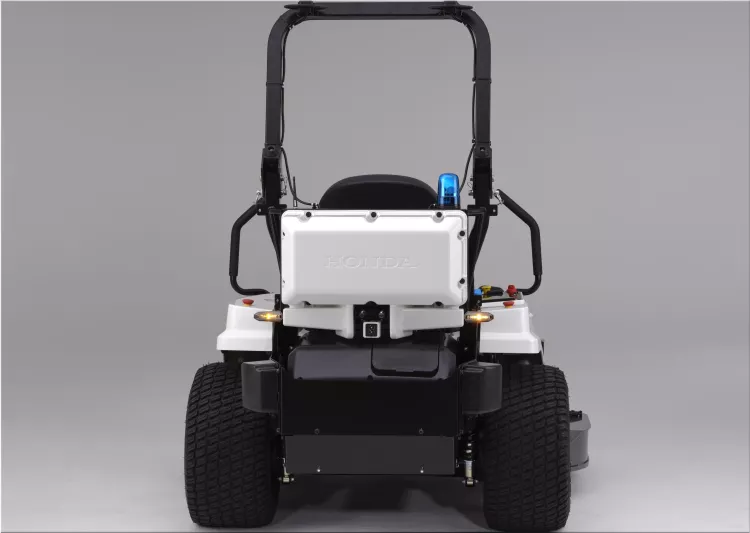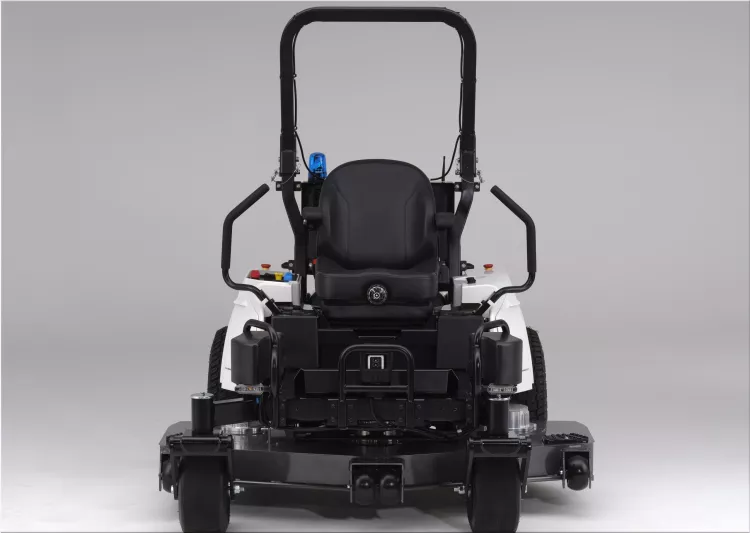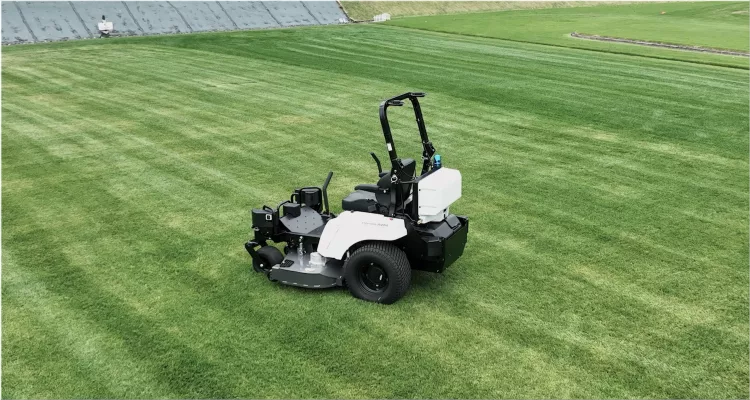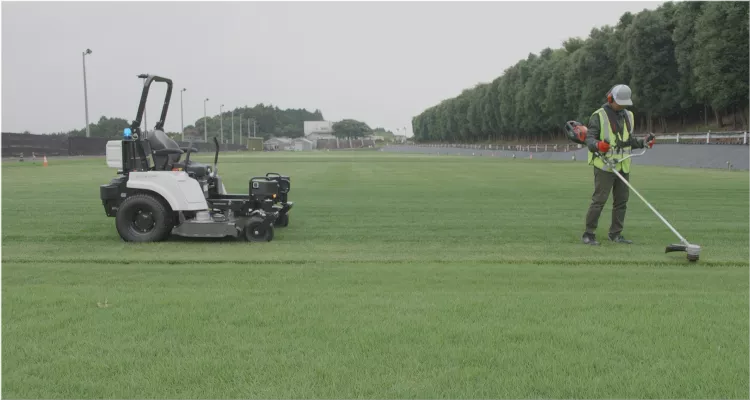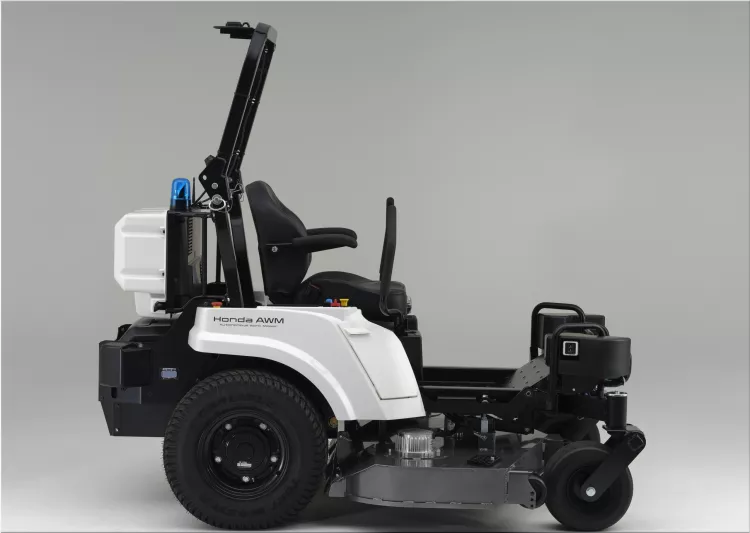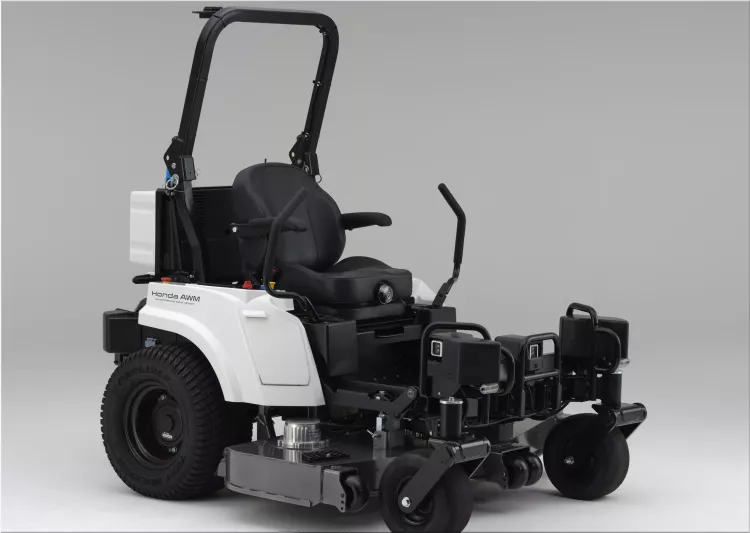Honda's New Electric Autonomous Mower: A Game-Changer for the Landscaping Industry
Honda, the Japanese automaker known for its cars, motorcycles, and power equipment, will unveil a prototype of its first-ever electric autonomous work mower (AWM) at the Equip Exposition 2023, the international landscape, outdoor living, and equipment exposition held in Louisville, Kentucky. The AWM is a zero-turn riding mower that can operate in manual or autonomous mode and is designed to improve the efficiency and sustainability of lawn care and landscape maintenance companies. We will take a closer look at this innovative product's features, benefits, and challenges and how it could revolutionize the landscaping industry.
What is the AWM, and how does it work?
The AWM is a battery-powered electric mower that has a 60-inch cutter deck with three 21-inch blades. It can cut grass at a height range of 1.5 to 5.25 inches and can reach a maximum speed of 10 mph in manual mode and 6 mph in autonomous mode. The AWM has a steel frame and front and rear suspension for durability and comfort. It also has an omnidirectional sensing system that uses LiDAR and radar to detect obstacles and avoid collisions.
The Honda Autonomous Work Mower (AWM) has two modes of operation: teaching and playback. In teaching mode, the operator manually maneuvers the mower to create a mowing route map using a global navigation satellite system (GNSS) for accurate location recognition. The mower can store up to 100 route maps in its memory. In playback mode, the mower reproduces the routes and patterns learned in teaching mode, using real-time kinematic (RTK) GNSS for high-precision positioning. The mower can also adjust its blade speed, wheel traction, and slope management according to the mowing load and terrain conditions.
What are the advantages of the AWM?
The AWM offers several advantages over conventional gasoline-powered mowers, such as:
- Zero emissions: The AWM is powered by a lithium-ion battery that can run for up to four hours on a single charge. The battery can be recharged using a standard 110-volt outlet or an optional solar panel. The AWM does not produce any harmful emissions or noise pollution, making it an eco-friendly alternative to gas mowers that contribute to greenhouse gas emissions and air pollution.
- Cost savings: The AWM can help reduce the operating costs of lawn care and landscape maintenance companies by eliminating the need for fuel, oil, filters, spark plugs, belts, and other maintenance items. The AWM also has fewer moving parts than gas mowers, which means less wear and tear and longer service life. According to Honda, the AWM can save up to $2,000 per year in fuel costs alone compared to a gas mower.
- Labor efficiency: The AWM can free up workers' time by performing mowing tasks autonomously, allowing them to focus on more high-value tasks such as trimming, edging, pruning, fertilizing, and mulching. The AWM can also reduce the physical strain and fatigue of workers who have to operate heavy and noisy gas mowers for long hours. The AWM can also work in adverse weather conditions such as rain or fog that may limit human visibility or safety.
- Quality performance: The AWM can deliver consistent and high-quality mowing results by following precise routes and patterns that create attractive lawn striping and accuracy. The AWM can also adapt to different grass types, heights, densities, and moisture levels by adjusting its blade speed and cutting height accordingly. The AWM can also handle slopes up to 15 degrees with ease.
What are the challenges of the AWM?
The AWM is still a prototype that is undergoing further development and testing by Honda. The company plans to launch a pilot program in 2024 with selected companies that are interested in assessing the AWM's applicability to their work environments. Honda is also seeking feedback from potential customers and stakeholders on how to improve the AWM's features and functionality.
Some of the challenges that Honda may face in bringing the AWM to market include:
- Regulatory compliance: The AWM may have to comply with various federal, state, and local regulations regarding safety, liability, privacy, cybersecurity, insurance, licensing, certification, registration, taxation, and other legal issues related to autonomous vehicles and machines. Honda may have to work with regulators and policymakers to establish clear and consistent rules and standards for the use of autonomous mowers on public and private properties.
- Customer acceptance: The AWM may encounter some resistance or skepticism from customers who are used to traditional mowing methods or are concerned about autonomous mowers' reliability, security, or affordability. Honda may have to educate customers about the benefits and advantages of the AWM over gas mowers and address any questions or doubts they may have about its performance or safety. Honda may also have to offer incentives or discounts to encourage customers to adopt the AWM.
- Competitive pressure: The AWM may face competition from other manufacturers or startups that are developing similar or superior products in the electric autonomous mower market. Honda may have to differentiate its AWM from other offerings by emphasizing its brand reputation, quality, innovation, and customer service. Honda may also have to monitor and respond to the landscaping industry's changing market trends and customer preferences.
How could the AWM change the landscaping industry?
The AWM could have a significant impact on the landscaping industry by creating new opportunities and challenges for lawn care and landscape maintenance companies, as well as for workers, customers, and the environment. Some of the possible implications of the AWM are:
- Increased productivity and profitability: The AWM could help lawn care and landscape maintenance companies increase their productivity and profitability by reducing their labor costs, fuel costs, maintenance costs, and downtime. The AWM could also help them expand their service offerings, customer base, and market share by providing faster, better, and greener mowing solutions.
- Improved working conditions and skills: The AWM could help improve the working conditions and skills of workers in the landscaping industry by reducing their physical strain and fatigue, enhancing their safety and comfort, and enabling them to focus on more creative and rewarding tasks. The AWM could also help workers develop new skills and competencies in operating, maintaining, and troubleshooting autonomous mowers and use digital tools and software for route planning, data analysis, and customer communication.
- Greater customer satisfaction and loyalty: The AWM could help increase customer satisfaction and loyalty by delivering consistent and high-quality mowing results that meet or exceed their expectations. The AWM could also help customers save money and time by eliminating the need for fuel, oil, or other consumables and reducing the frequency of mowing visits. The AWM could also help customers reduce their environmental impact by using renewable energy sources and producing zero emissions.
- Reduced environmental footprint: The AWM could help reduce the environmental footprint of the landscaping industry by replacing gas mowers that emit carbon dioxide, nitrogen oxides, hydrocarbons, particulate matter, and other pollutants that contribute to climate change, smog, acid rain, and respiratory diseases. The AWM could also help conserve natural resources such as water, land, and biodiversity by minimizing soil erosion, water runoff, noise pollution, and habitat loss.
Conclusion
Honda will introduce the Autonomous Work Mower (AWM) prototype electric autonomous work mower at the Equip Exposition 2023. The AWM is a zero-turn riding mower that can operate in manual or autonomous mode and is designed to improve the efficiency and sustainability of lawn care and landscape maintenance companies. The AWM offers several advantages over conventional gas mowers, such as zero emissions, cost savings, labor efficiency, and quality performance. However, the AWM also faces some challenges, such as regulatory compliance, customer acceptance, and competitive pressure. The AWM could significantly impact the landscaping industry by creating new opportunities and challenges for companies, workers, customers, and the environment. The AWM is still under development and testing by Honda, which plans to launch a pilot program in 2024 with selected companies. Honda is also seeking feedback from potential customers and stakeholders on improving the AWM's features and functionality.
- Add new comment
- 52 views





